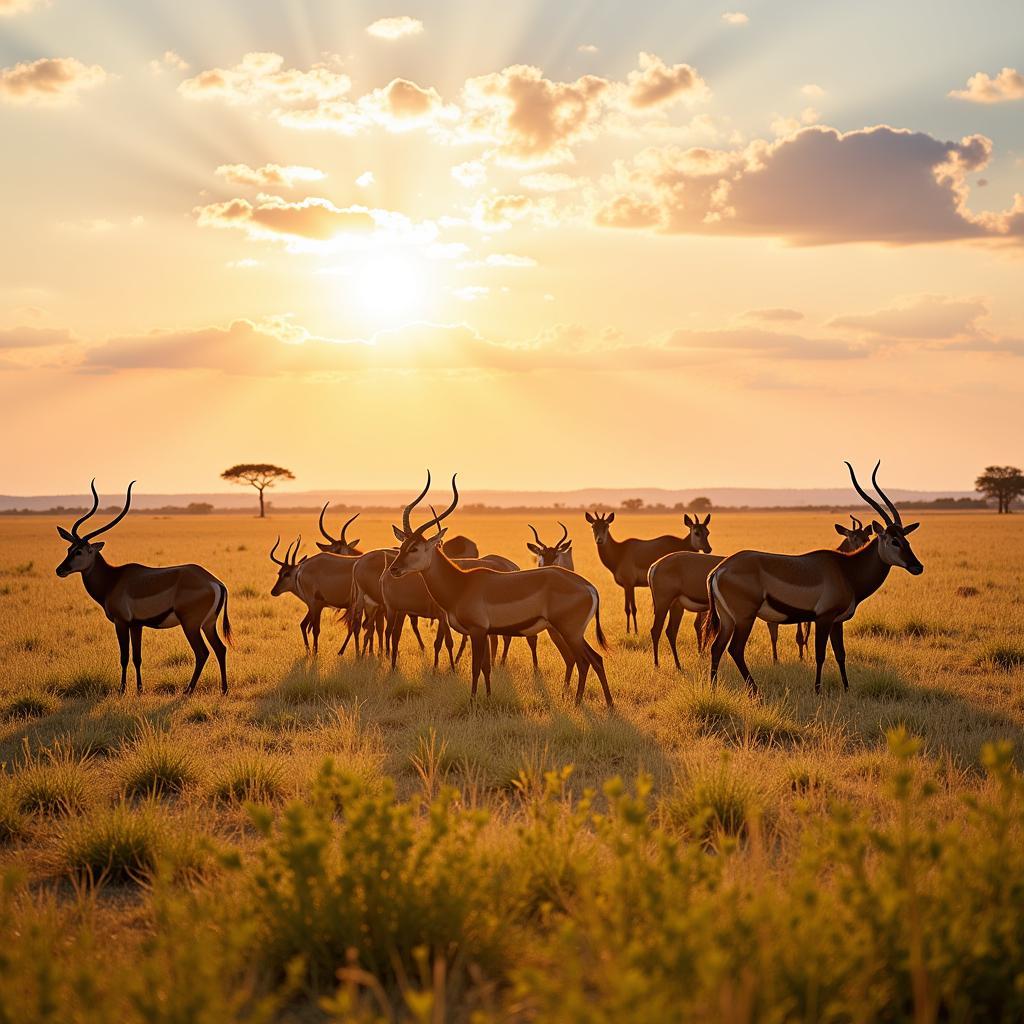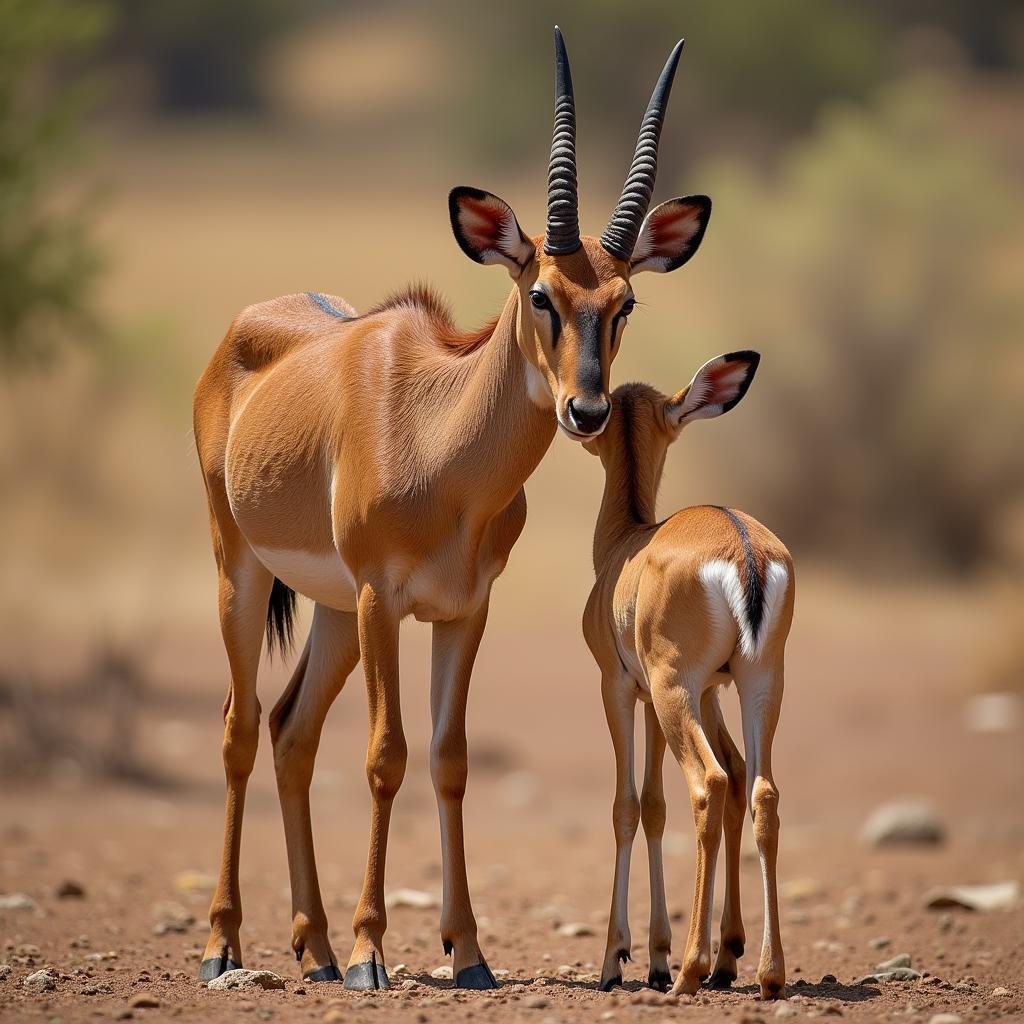Exploring the Diversity of African Antelope Groups
African antelopes are a captivating sight, their graceful forms dotting the savannas and woodlands across the continent. These elegant creatures, far from being a monolithic group, represent a stunning array of diversity within the animal kingdom. Delving into the world of African antelopes reveals a fascinating tapestry of evolutionary adaptations, social structures, and ecological roles.
A Kaleidoscope of Shapes and Sizes
 Herd of African Antelope on the Savanna
Herd of African Antelope on the Savanna
From the diminutive Royal antelope, standing a mere 10 inches tall, to the towering Eland, which can reach heights of over 6 feet, African antelopes showcase an extraordinary range in size. This diversity extends to their physical appearances as well. The long, spiral horns of the Greater Kudu contrast sharply with the short, spiky horns of the klipspringer, while the striking black and white markings of the Sable antelope stand out against the golden hues of the impala.
Social Structures: From Solitary Lives to Thriving Herds
African antelopes exhibit a wide range of social structures, each tailored to their specific ecological niche. Some species, like the secretive Duiker, lead solitary lives, preferring the dense cover of forests. Others, such as the Waterbuck, form small, territorial family groups. However, it is the large herds of grazing antelopes, like the Wildebeest and Zebra, that paint an iconic image of the African plains. These massive gatherings, often numbering in the thousands, offer protection from predators and increase foraging efficiency.
 African Antelope Mother and Calf
African Antelope Mother and Calf
The Dance Between Predator and Prey
As primary consumers, African antelopes play a crucial role in the delicate balance of the African ecosystem. Their grazing habits influence plant diversity, while their presence provides sustenance for a range of predators, including lions, leopards, cheetahs, and wild dogs. This intricate dance between predator and prey has shaped the evolution of both, leading to incredible adaptations for both survival and hunting.
Adapting to Thrive: A Story of Resilience
The diversity of African antelopes is a testament to their remarkable ability to adapt to a wide range of habitats and ecological challenges. From the arid deserts of Namibia to the lush grasslands of the Serengeti, each species has developed unique strategies for finding food, conserving water, and avoiding predators.
 African Antelopes at a Water Hole
African Antelopes at a Water Hole
A Future Uncertain: Conservation Challenges
Despite their resilience, many African antelope species face growing threats from habitat loss, poaching, and climate change. Conservation efforts are crucial to ensure the survival of these magnificent creatures and the preservation of Africa’s rich biodiversity for generations to come.

